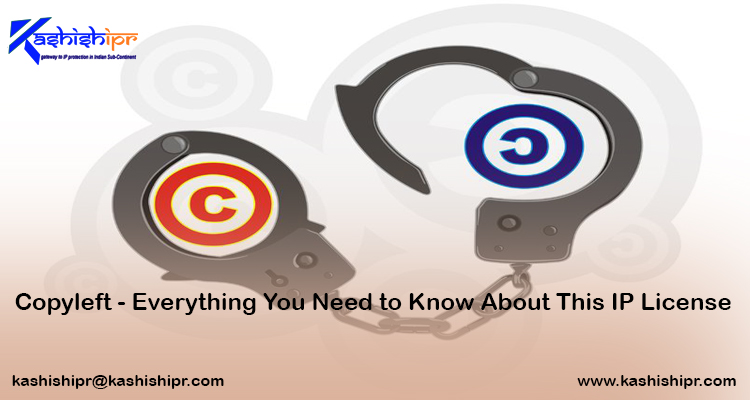Copyleft – Everything You Need to Know About This IP License
 Posted On
Posted On
We are living in a rapidly advancing era where the Internet has made it ever-harder to prevent unauthorized users from stealing one’s hard work. In such a malicious age, there might be hardly anyone who isn’t aware of the Intellectual Property Rights (IPRs). There are several IPRs that one can get to keep his original assets safe. However, the selection varies as per the needs of the owners and nature of the things to be protected. For instance, copyright is a set of some exclusive rights that empower the creator to prevent others from using his original creation without his permission. Indeed, almost all of us are aware of this IPR and understand that being creators, we need to safeguard our creative Intellectual Property (IP) with it. Nevertheless, it becomes a bit difficult in case of being prolific or having famous work, thus making many creators to move towards copyleft instead.
In this article, you will come across almost everything that you need to know about copyleft.
What is Copyleft?
Copyleft refers to an IP license based on the concept according to which you can distribute your work to others with the right to copy, modify, or share it further. It provides users with the freedom to use, reform, or distribute the work in whatever way they want on a condition of maintaining the same liberty in the revised editions of the work. It encourages better and more creations. Although copyleft compels people to distribute the modified work while transferring the same copyleft license to others, it doesn’t demand to make the copylefted work free as in case of the public domain.
What are the 3 Key Concepts of Copyleft?
- Copyleft Is All About the Freedom of Users
In spite of the name that appears contradictory to copyright, copyleft is copyright’s subset intended with a goal to bestow users with freedom, not to abolish copyright. Copyright empowers the original creator of a unique and innovative work to legally control whether others can copy, modify, and distribute his work or not and if they can, then how. If a user uses a copyrighted work in a manner not similar to how its owner allows, he may face legal issues like copyright infringement. It means copyright law entitles the original creator to prohibit others from using his work in an unauthorized manner and also to take legal actions against such users. However, copyleft license exists inside the legal framework of copyright, but its core concept is to allow users to copy, change, or distribute works as per their need, with only one vital clause that the derivate works must offer the same freedom to other users.
- Copyleft Isn’t Limited to Just Permission
Many people have a misconception that copyleft license is like a permissive license that bestows users with the freedom to do whatever they want. Well, the fact is that copyleft undoubtedly grants liberty but at the same time, imposes users to fulfill some demands. The most remarkable one is that the user accessing a copyleft object must distribute its derivative versions under license offering the same or similar rights to other users.
Example: Suppose you are a photographer who provides a copyleft photo to any company. The firm can copy, modify, and share the photo as it wants, but at a condition of allowing others to use the modified work with the same freedom.
Known as the ‘share-alike’ clause, this shows that copyleft isn’t limited to just giving freedom; it demands freedom as well.
- Copyleft Isn’t Necessarily Free
As seen above, a copyleft works on two significant aspects; first: the freedom for users to reproduce, change and share derivative works, second: the “share-alike” condition to maintain liberty in secondary works for further users. However, freedom doesn’t mean that copyleft work is accessible for free. Indeed, you may be able to get any copyleft object without paying but only if the owner is ready. Moreover, most of the time, such works are available in exchange for some fees. Therefore, note that if you desire to use any copyleft work, you may have to pay for it.
What is the Difference Between Copyright and Copyleft?
Although the concept of copyleft has resulted from copyright, both these legal terms differ. One remarkable difference between copyleft and copyright is that the former permits third-parties to use the owner’s rights as they want, i.e., liberally but with a demand that they will not cut off the liberality and allow others also to enjoy the same freedom whereas copyright appears a bit restrictive and limit third-parties to use the rights as the owner wants. In short, copyleft provides and demands freedom, whereas copyright focuses on restriction and originality of the author’s work.
Copyright or Copyleft: What Should You Opt?
Well! The answer to this question depends on what you as a creator want; whether to keep the rights to yourself or welcome third-parties willing to do the same with other users. When it comes to financial benefits, copyleft licensing may not help you in making good money. Moreover, even if you could end up making earnings, there are possibilities that you would make significantly less than what you have made by traditional copyright rules. Hopefully, you have gained a better insight into copyright and copyleft and can make a fair decision yourself. However, in case you still have any doubt, it is better to consult an experienced attorney who can help you in having a clear idea of these two legal terms. For more visit: https://www.kashishipr.com/
Don’t forget to follow us on social media:
Facebook – https://www.facebook.com/kashishipr/
Twitter – https://twitter.com/kashishipr
Linkedin – https://www.linkedin.com/company/kashishipr/
Pinterest – https://www.pinterest.com/kashishipr/
Tumblr – https://kashishipr.tumblr.com/
